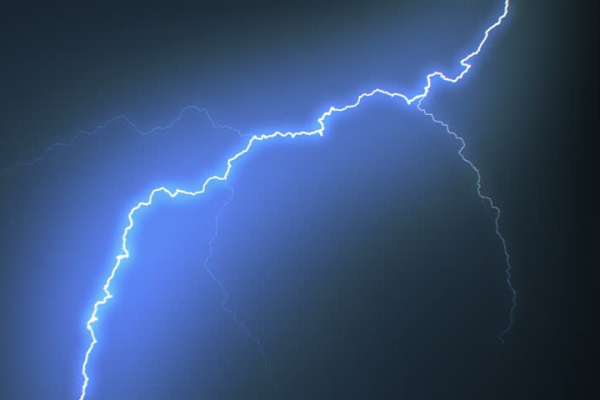
THE sight of thick dark clouds building up over drought-prone areas of the country is enough to raise hopes for a better cropping season.
BY WILSON JOHWA
In late October when the first rains break, the long, dry months are quickly forgotten as the sparse, golden brown stubbles of grass turn to a resplendent green. However, the onset of the rainy season brings with it a frightening phenomenon that claims dozens of lives every year.
Zimbabwe is one of the world’s most lightning-prone countries: the holder of a world record in lightning-related fatalities. During the rainy season, lightning strikes normally kill up to 100 people, mostly rural children.
Many more people are maimed and countless livestock lost. Yet the Meteorological Services Department of Zimbabwe says it is possible that lightning deaths in the country might actually be under-reported by 20 to 30% and lightning injuries by more than 40%, as many deaths and injuries go unreported.
“The high number of lightning confirmation claims forwarded to the department for processing by property insurance companies, confirms that damage to equipment supplying electric power and telecommunications services, as well as to business and domestic premises is quite immense,” says meteorologist Desmond Manatsa.
Zimbabwe has the distinction of being one of lightning’s most favourite places. It is even cited in the Guinness Book of world records as the country where a single bolt of lightning claimed the largest number of victims. This occurred in a village near the eastern border town of Mutare in 1975 when 21 people were killed while sheltering in a hut.
The majority of lightning-related fatalities and injuries in the country are usually recorded in rural areas. This is because large buildings provide protection for those inside due to the metal frame of the building and specially designed lightning conductors. People on buses and in cars are also safe because of the metal frames around them.
- Chamisa under fire over US$120K donation
- Mavhunga puts DeMbare into Chibuku quarterfinals
- Pension funds bet on Cabora Bassa oilfields
- Councils defy govt fire tender directive
Keep Reading
Lightning has continued to be a worrying blight in the country. For instance, it struck and killed 10 people attending a church service in November 2002. Sixty-one others attending the service in the town of Chitungwiza, 35km south of Harare, were hospitalised with burns. The dead and injured were members of the Johane Masowe apostolic sect, the country’s largest religious group, which normally conducts meetings in the open.
On Tuesday this week, lightning struck four pupils of Rusike Primary School in Goromonzi, Mashonaland East, instantly killing three.
Police say most of the dead are children sheltering under trees. Study results released by the University of Zimbabwe in 1991 after research spanning seven years showed that lightning fatalities in the country average 90 to 120 per annum. Of all the districts, Gutu, which is quite populous, led with about 10 fatalities per annum. Binga, Marondera and Rusape follow with three to four deaths per annum.
Lightning figures recorded in Zimbabwe (150 873 sq miles-390 761 sq km) were higher than those recorded in the whole of the USA (3 537 441 sq miles 9 161 972 sq km) where, according to the Lightning Safety Tips Board of America, the phenomenon kills an average of 73 people per year. Since the surface area of Zimbabwe is many times smaller than that of the United States, these statistics stick out prominently on the global scale.
“Even when comparing us to our neighbouring South Africa, whose storms are just as fierce as ours, we still find that it has a record of a total of 400 fatalities in 10 years,” Manatsa says.
The high lightning toll in Zimbabwe can be explained by the prevalence of granite outcrops all over the country. The University of Zimbabwe established that granite is radioactive and discharges gamma rays up to the cloud, thus ionising the air molecules.
Abundant granite outcrops, together with soot from the numerous kitchen huts, offer the much-needed opposite charge on the ground, while tall objects offer the easiest route for electrical discharges to steer them way to the ground.
Manatsa says a point was also found in the Rhino and Lion Game Reserve in north-eastern South Africa where lightning struck repeatedly and had been doing so since the beginning of time. Here, unusually high concentrations of dolomite rock draw 15 lightning strikes a month. In 1996, lightning struck and killed a 5,5m tall giraffe while standing on a hill in the reserve. A year later, lightning electrocuted his mate.
— Islam Online











